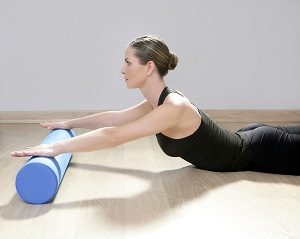Unfortunately, this happens more often than you might think. Someone decides they’re finally going to get in shape, take up a new sport or even kick their current activities up a notch. The next thing they know, they’re sidelined with an injury.
But that doesn’t mean you should stay away from exercise just because you haven’t been active recently. The health benefits from a daily workout routine far outweigh any risk of injury. In fact, many sport-related injuries can be avoided altogether, just by following a few simple steps.
Time to call your doctor
Most people don’t think about seeing their doctor until they’re sick or injured. But preventative medicine can be the best kind, and your doctor can make sure you don’t have any underlying illnesses or conditions that would restrict your activity in any way. This is an important step no matter what age you are, but it is especially important if you’re overweight or have been sedentary for some time.
Don’t stretch your warm up
Most people know that warming up before any kind of physical activity is a good way to prevent injury. But many mistakenly think that stretching is the way to go. Stretching may have some benefits on its own, but a dynamic warm up that prepares the muscles for your upcoming activity is more likely to prevent injuries. This would include moves such as standing straight-leg raises, jumping jacks, heel kicks and walking lunges.
Slow and steady always wins
Doing too much too soon is another common reason for sports-related injuries. Whether you’re wanting to prove that you’re in better shape than you seem or you’re looking for faster results, or you just get caught up in the excitement of being active again, nothing will sideline you faster than overusing muscles and ligaments that haven’t seen much action lately. Instead, start any new activity at a moderate intensity, don’t push yourself to the point of exhaustion and allow sufficient recovery time in between workouts.
Pain doesn’t always mean gain
Once you’ve settled into a bit of routine, you may feel like you’re ready to kick things up a notch. But you still need to proceed cautiously and learn to listen to your body. If you experience any type of new pain that doesn’t subside after a day or two of rest, you may need to dial back your activity. If it worsens or continues to linger, it’s probably best to see your doctor.
Get help before you give in
Some people get so overwhelmed trying to figure out where to begin or if they’re doing things the right way, they end up not even trying or giving up after only a few days. If worrying about a potential injury is keeping you from even starting a new activity, try working with a trainer. They can walk you through the basics to get you started and boost your confidence until you’ve established a routine.
Of course, no one wants to experience an injury. But many of the most common sports-related injuries can be avoided, so don’t let that keep you from starting an exercise program or trying a new sport. Just start out by checking in with your doctor and following a few common sense rules.
For more articles go to http://lifesportfitness.lifestyleezine.com


 With the start of the nice weather, we’re eager to get out in the garden and get our planting done. After a long winter cooped up inside we get excited to spend time outside in our gardens. But, without the proper techniques and getting your body ready for the work, many injuries and strains can happen. Gardening uses muscles that we don’t often use and after a season or so of them resting, getting right back into it without a proper warm up and stretching can cause strains or muscle soreness.
With the start of the nice weather, we’re eager to get out in the garden and get our planting done. After a long winter cooped up inside we get excited to spend time outside in our gardens. But, without the proper techniques and getting your body ready for the work, many injuries and strains can happen. Gardening uses muscles that we don’t often use and after a season or so of them resting, getting right back into it without a proper warm up and stretching can cause strains or muscle soreness. There are many reasons why massaging out the tight knots in muscles is an important part of your workout routine, even if you already stretch regularly. No matter how much you stretch, there is a build of fascia that creates muscle knots that won’t go away, which can lead to many different problems.Regular use of a foam roller can:
There are many reasons why massaging out the tight knots in muscles is an important part of your workout routine, even if you already stretch regularly. No matter how much you stretch, there is a build of fascia that creates muscle knots that won’t go away, which can lead to many different problems.Regular use of a foam roller can: